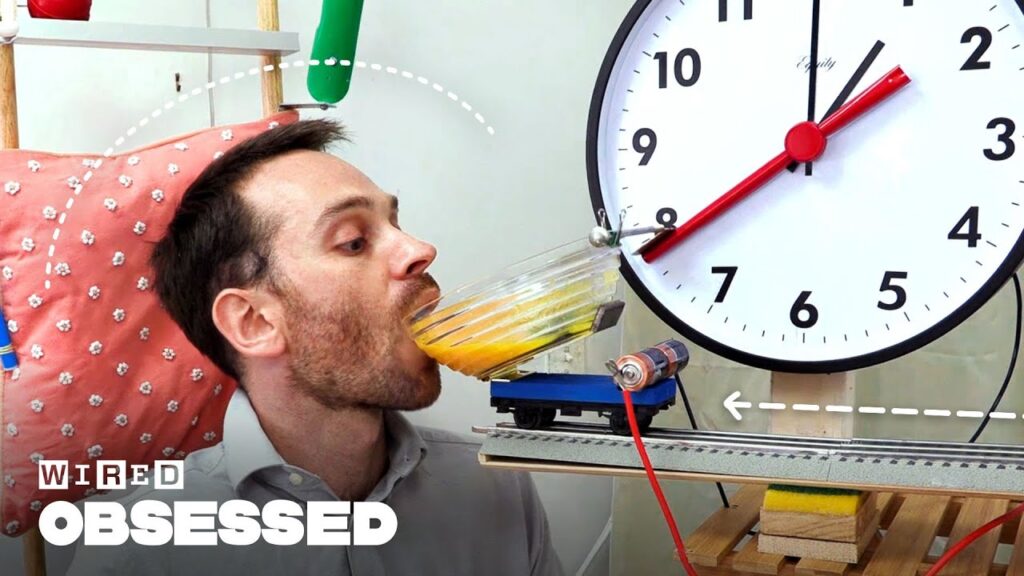Rewards and Learning: A New Understanding From Cognitive Neuroscience
Summary
Recent findings in cognitive neuroscience show how the stratum reacts to rewards and learning, leading to a re-evaluation of the connection between these processes. Mental models have taken on a new meaning, seen as patterns that shape predictions, responses, and outcomes. Memory is now viewed as a circular, generative process involving maps that shape behavior and future experiences. The speakers stress the importance of changeability, and suggest replacing the word “record” with “model” to better represent an abstraction of something rather than its exact etching.
Table of Contents
- Introduction
- How does the brain shape behavior?
- What is the role of memory in shaping preferences?
- What is the importance of changeability?
- How can we design studies that uncover unexpected findings?
- Conclusion
Introduction
Cognitive neuroscience is a relatively new field that explores the complex workings of the brain and how it shapes behavior. Recent discoveries have led to a re-evaluation of our understanding of rewards and learning, including how these processes are connected. In this article, we delve further into the insights gained from cognitive neuroscience and how it provides a new understanding of mental models, memory, and changeability.
How does the brain shape behavior?
The brain is a complex network of interconnected areas. As a result, cognitive neuroscience is turning into a science of networks that studies how these areas communicate and work together. The speakers in the video discuss how mental models shape predictions and responses. Mental models refer to patterns of potential outcomes and events, and they are fundamental in shaping our behavior in response to stimuli. Memory is seen as a circular, generative process involving maps that are built from experience and shape future experiences.
The speakers underscore the importance of keeping an open mind when designing studies. Unexpected findings can often provide new insights into how the brain works. When designing studies, it is crucial to identify potential biases and blind spots, which can impact the interpretation of the results.
What is the role of memory in shaping preferences?
Memory is viewed as a critical component in shaping our preferences, from daily routines to plans for the future. Mental models are a key factor in shaping our memories and experiences. One of the speakers notes that our preferences and interests are related to our memory. For example, if someone prefers one type of food over another, it is a result of their past experiences, which have shaped their preferences.
The discussion then moves towards revising the traditional notion of memory as a record of the past. Instead of recording an exact copy of something, memory is seen as more of an abstraction, or model, of an experience. This change in perspective also highlights the importance of changeability in memory. Rather than holding onto every detail of an experience, efficient models need to let go of information to make room for new experiences.
What is the importance of changeability?
The speakers discuss the importance of changeability and how it is related to behavioral flexibility. One speaker suggests that the traditional view of memory as a record of the past is not sufficient to express the importance of changeability. Instead, it is necessary to view memory models as being changeable and adaptable.
They suggest that replacing the word “record” with “model” would be more accurate, representing memory as more than just an exact representation of an experience. Memory models are approximations of experiences, and they can evolve and change over time, providing new insights into how the brain works.
How can we design studies that uncover unexpected findings?
Designing studies that uncover unexpected findings requires keeping an open mind and considering all potential biases and blind spots. It is crucial to identify these factors and develop a method that is not biased towards a specific outcome.
The speakers suggest that cognitive neuroscience should evolve into a science of networks and focus on the interconnectedness of different areas of the brain. This approach would provide a more comprehensive understanding of how the brain shapes behavior.
Conclusion
Cognitive neuroscience has provided new insights into how the brain works and how it shapes behavior. Mental models, memory, and changeability are key concepts that underpin this understanding. The traditional notion of memory as a record of the past is being revised to better represent memory as a model, an approximation, and abstraction of experiences. Keeping an open mind and considering all potential biases and blind spots is critical to designing studies that uncover unexpected findings. Cognitive neuroscience is evolving towards a science of networks, emphasizing the interconnectedness of different areas of the brain, and providing a more comprehensive understanding of how the brain shapes behavior.







